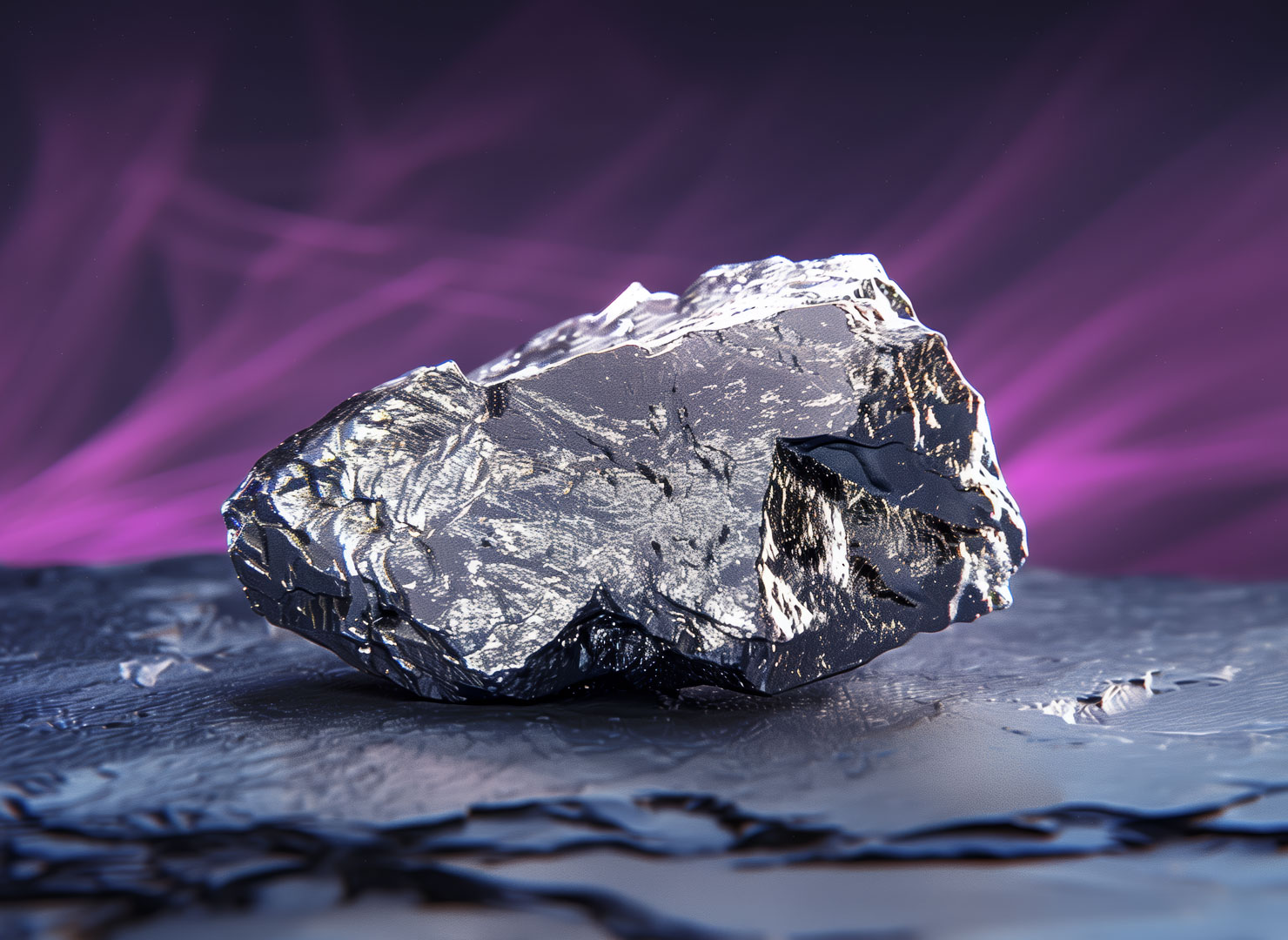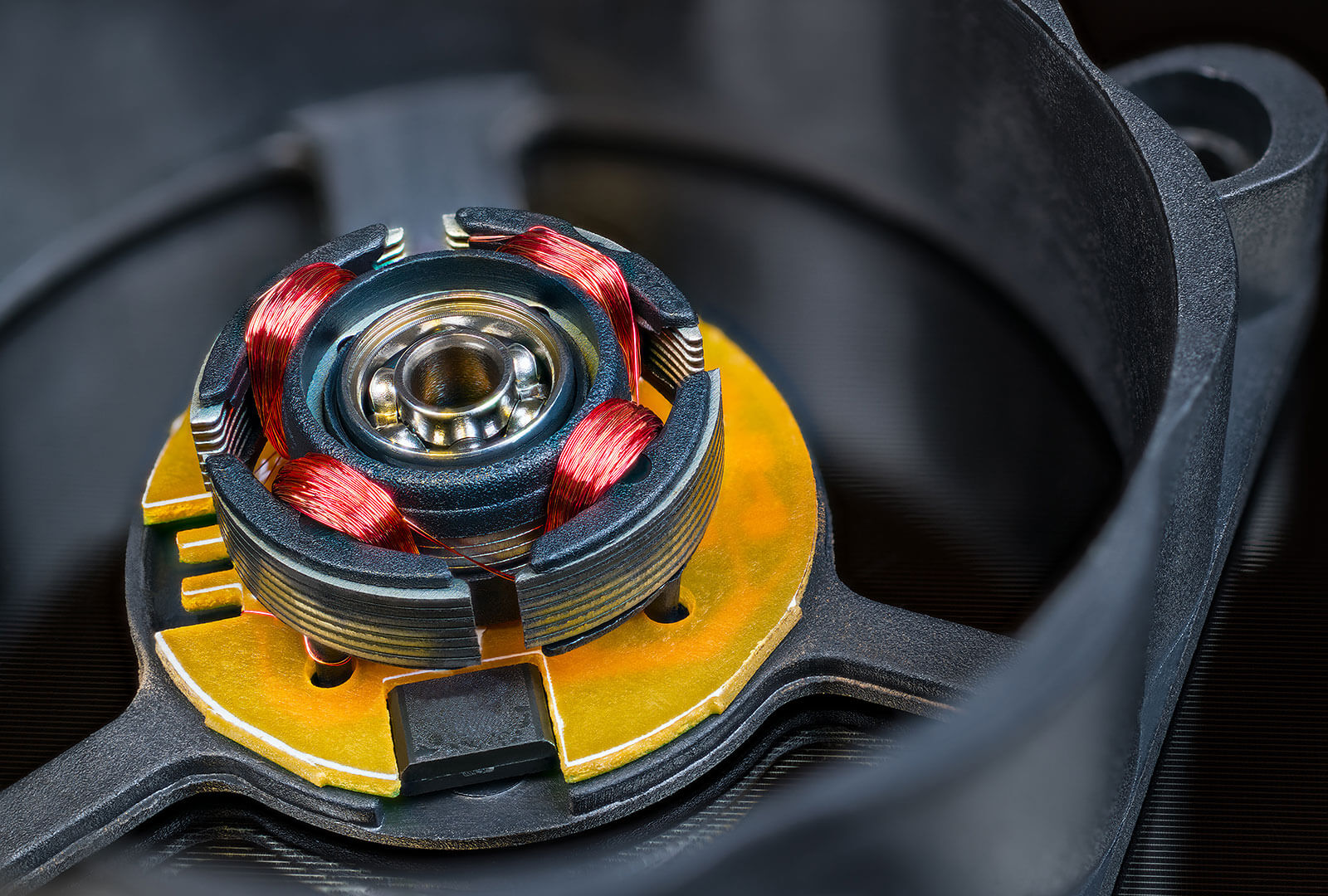The Element Praseodymium
On this page you can find out more about the rare earth element
Name: Praseodymium
Symbol: Pr
Ordinal number: 59
Density: 6,77 g/cm3
Melting point: 931 °C
Boiling temperature: 3.512 °C
Praseodymium is one of the lanthanidesA group of 15 elements with chemically very similar properties. in the periodic table.
Introduction
Praseodymium: Strongest as a Team Player
In the periodic table, praseodymium is a lanthanide, a group that belongs to the rare earth elements. Praseodymium is a particularly effective additive in alloys and compounds, and its properties make it an important building block for the success of the energy transition.

Praseodymium’s Discovery Is Closely Linked to Neodymium
The discovery of praseodymium took place gradually over several decades. In 1841, the Swedish chemist Carl Gustav Mosander extracted the rare earth metal didym from cerite, a mixture of oxides of various lanthanides discovered at the beginning of the 19th century. The name didym was derived from the Greek word for twin and referred to its similarity to the element lanthanum, which was also separated from cerite earth. In 1874, however, the Swedish natural scientist Per Teodor Cleve discovered that didym is actually two elements, neodymium and praseodymium. However, it was not until 1885 that the Austrian chemist Carl Auer von Welsbach succeeded in separating them. The twin thus became another twin: praseodymium became the green twin (from Greek: prásinos = green) and neodymium (from neos, for new) became the „new twin“ due to the green color of some of its compounds.
Main areas of application for praseodymium

The Discoverer of Praseodymium
Born in Vienna in 1858, the chemist Carl Freiherr Auer von Welsbach is one of Austria’s most famous scientists. Von Welsbach achieved fame through his success as an entrepreneur and inventor, among other things. This discoverer of several rare earths conducted research in a laboratory in his own castle, among other places.
Characteristics
Praseodymium Has Paramagnetic Properties
In metallic form, praseodymium is soft, silvery-white, and reactive. It is somewhat more resistant to corrosion in air than europium or lanthanum, for example, but easily forms a green oxide layer. Like the other lanthanides, the rare earth metal is paramagnetic, which means that magnetic forces only develop when an external magnetic field is applied.
Areas of Application
Main Application: Permanent Magnets
In addition to many chemical and physical properties, neodymium and praseodymium also share their most important area of application: permanent magnets. The strongest such magnets in the world are based on a neodymium-iron-boron alloy, to which a certain amount of praseodymium can be added. These NdFeB magnets are required for technologies such as electric motors, wind turbines, and MRI scanners, but are also used in everyday devices such as loudspeakers and headphones. Like its „twin“ neodymium, praseodymium is also used to color and decolorize glass. Solid-state lasers and alloys are further areas of application.

Permanent Magnets
Permanent magnets retain their magnetic force without external energy inputs. They are in great demand in areas that require high power density, such as electromobility and wind power. They are the driving force behind many environmentally friendly technologies.
Learn more

Wind Power Technology
Wind turbines use generators to convert wind energy into electricity. Many of these generators use permanent magnets made from rare earths to make the systems powerful, easy to maintain, and quiet. Wind power technology will play a crucial role in a successful energy transition.
Learn more

Electromobility
The beginnings of electromobility date back to the 19th century. Due to the fight against climate change, this technology is experiencing a renaissance and driving demand for powerful magnets that convert electricity into kinetic energy in electric motors.
Learn more

Pigments
One of the first uses of rare earths was to color glass and enamel. Rare earth pigments produce colors, including yellow, blue, green, pink, violet, and orange.
Learn more
Deposits
A Sought-After Raw Material for Green Technologies
Praseodymium only occurs in nature in chemical compounds with other lanthanides, mainly in minerals such as bastnäsite and monazite. The largest deposits of rare earths are found in China, Vietnam, Brazil, and Russia. China is the world leader in the mining and processing of these critical raw materials.
The Bayan Obo deposit in China, Mountain Pass in the US, and Mt. Weld in Australia are currently important sources of praseodymium.

Permanent Magnets as Demand Drivers
Especially in combination with neodymium, praseodymium will continue to be a sought-after raw material for industry, as permanent magnets are considered a growth market due to their importance in increasingly important technologies such as electromobility and wind power. The German Mineral Resources Agency DERA forecasts that by 2040, the demand for neodymium and praseodymium could increase to up to 227% of primary production of the elements in 2018. Due to the high concentration of countries that produce and process praseodymium, there is a prospective supply risk given the massive increase in demand.
Price Development
The Price of Praseodymium as a Physical Asset
At TRADIUM, private customers can buy praseodymium as a physical asset. The following price chart shows the price development of the rare earth metal in its most common trading form. The chart is for information purposes only and does not reflect an offer to purchase.
Here you can find the price charts for other rare earths available as physical assets from TRADIUM.
Raw Materials Trading Industrial Customers
TRADIUM trades in all industrially relevant rare earth oxides. Choose from a wide range of specifications and take advantage of the option to reserve batches for the long term.
Purchase of Physical Assets for Private Customers
Benefit as a private customer from the exciting market for rare earths as a physical asset. You can find out here what opportunities TRADIUM offers and what tax advantages a purchase of raw materials entails.